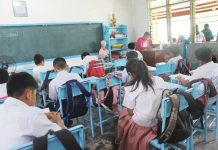ILOILO City – Despite a high basic literacy rate, Iloilo Province has recorded the lowest functional literacy rate in Western Visayas, raising concern over the effectiveness of education programs in equipping residents with real-world comprehension and analytical skills.
Based on the 2024 Functional Literacy, Education, and Mass Media Survey (FLEMMS) released by the Philippine Statistics Authority – Regional Statistical Services Office 6 (PSA RSSO 6) on June 5, Iloilo Province registered a functional literacy rate of only 68.4 percent among individuals aged 10 to 64 — the lowest among all provinces and highly urbanized cities in the region.
“This is a wake-up call for stakeholders in education and local governance. While basic literacy remains relatively high, functional literacy, which includes comprehension and application, is where we are falling short,” said PSA RSSO 6 chief statistical specialist Marlene Alviar.
Functional literacy, as defined in the FLEMMS, refers to an individual’s ability not just to read and write but also to compute and comprehend information from various sources — essential skills for daily life, employment, and civic participation.
The comparative functional literacy rates across the region are as follows:
* Aklan – 73.9%
* Antique – 73.8%
* Guimaras – 73.0%
* Capiz – 70.9%
* Iloilo City – 70.7%
* Iloilo Province – 68.4%
While Iloilo Province’s basic literacy rate stands at 88.6 percent, the significant gap with its functional literacy rate underscores deficiencies in comprehension, critical thinking, and the ability to apply learned information.
Across Western Visayas, only about seven in 10 individuals are functionally literate as of 2024.
The data also showed that females (74.8%) outperform males (66.6%) in functional literacy.
“This data provides crucial insight for designing education programs and policies that not only teach reading and writing but also equip individuals with the skills to understand and apply information in real-life situations,” Alviar added.
The FLEMMS is conducted nationwide every five years as mandated by Executive Order No. 352. It serves as a key reference in crafting education and literacy policies and tracking the country’s progress toward Sustainable Development Goal 4.6.1, which aims to ensure that all youth and a substantial proportion of adults achieve literacy and numeracy./PN





